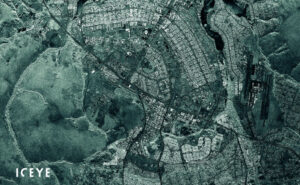NGA supplies U.S. government agencies with geospatial intelligence derived from satellite images. Its sister agency, the National Reconnaissance Office, is responsible for procuring imagery for NGA.
Most of the demand is for photographic imagery captured by electro-optical sensors in space but analysts are increasingly seeing the value of other sources of intelligence such as space-based synthetic aperture radar that can penetrate clouds, and radio frequency satellites that identify and geolocate the source of RF signals. A growing number of companies in the United States and Europe are offering these services.
Gauthier said NGA is preparing to work with “hundreds of suppliers” and that will require an ability to do “real time solution matching” as needs arise, he said Jan. 12 on a webinar organized by the Smallsat Alliance, a space industry group.
NGA and the NRO are stepping up market research to better understand what’s available, said Gauthier. Along with that, there is a need for a “very robust acquisition services office” that can bring the new technology to government users.
Gauthier said the intelligence community slowly is pivoting to a “commercial first” mindset. “We’re promoting that strategy across leadership … that basically says the cost of ignoring commercial capabilities is much worse than the cost of using them.”
That view is shared by congressional committees. The 2021 National Defense Authorization Act has provisions calling for DoD to use commercial geoint data and services.
The NRO is looking to expand the pool of commercial imagery suppliers. Several companies received study contracts, including suppliers of electro-optical, radar, RF and hyperspectral imagery. The agency said procurement contracts will be awarded this year. NGA also has pilot programs under way aimed at developing new ways to work with commercial vendors.
Gauthier said he could not comment on NRO procurement decisions. He said both NGA and the NRO are “committed to purchasing capabilities from commercial constellations.”



